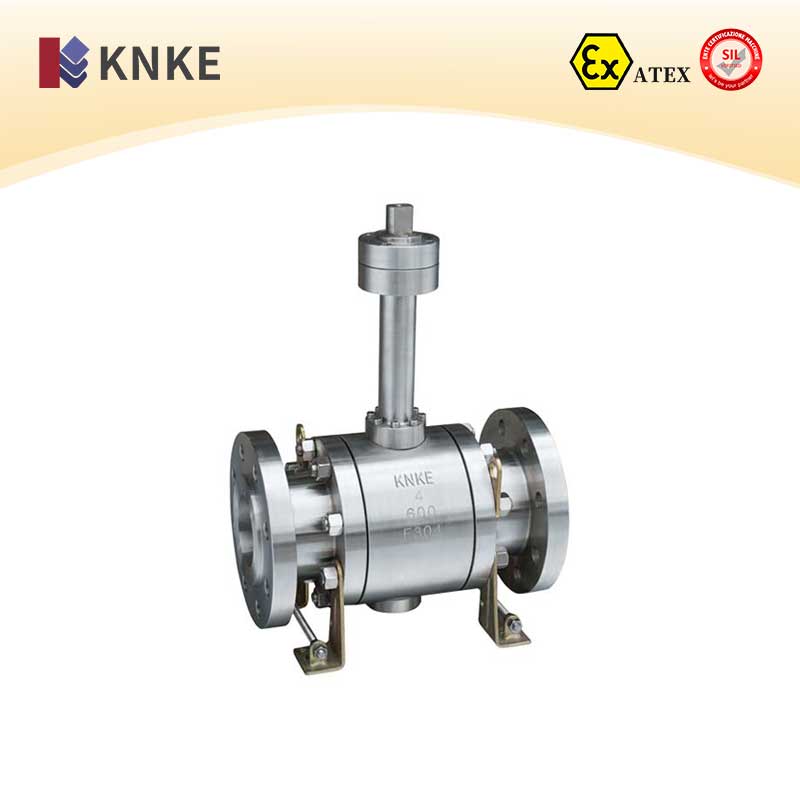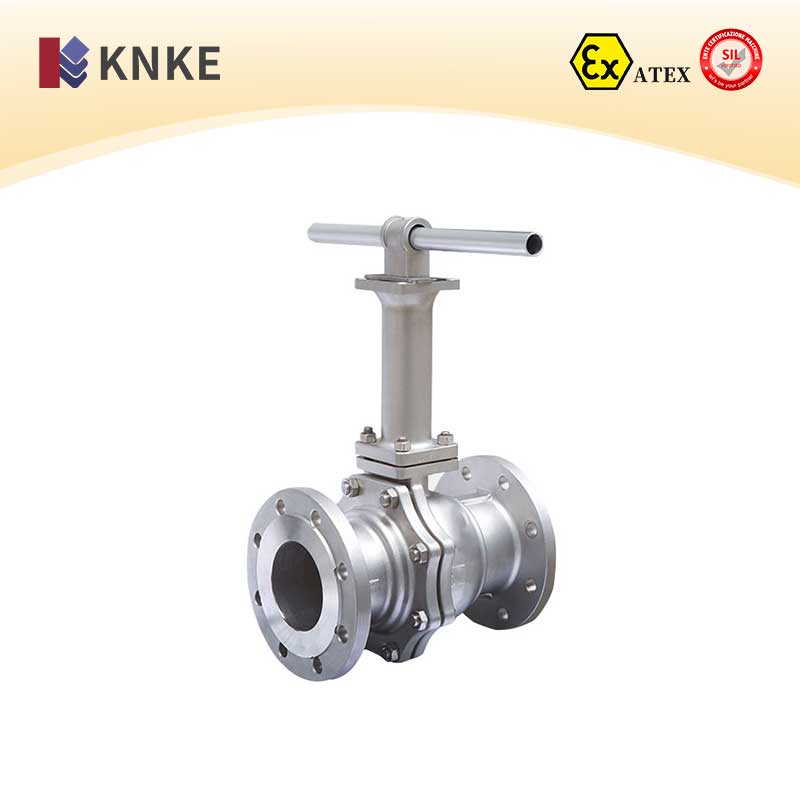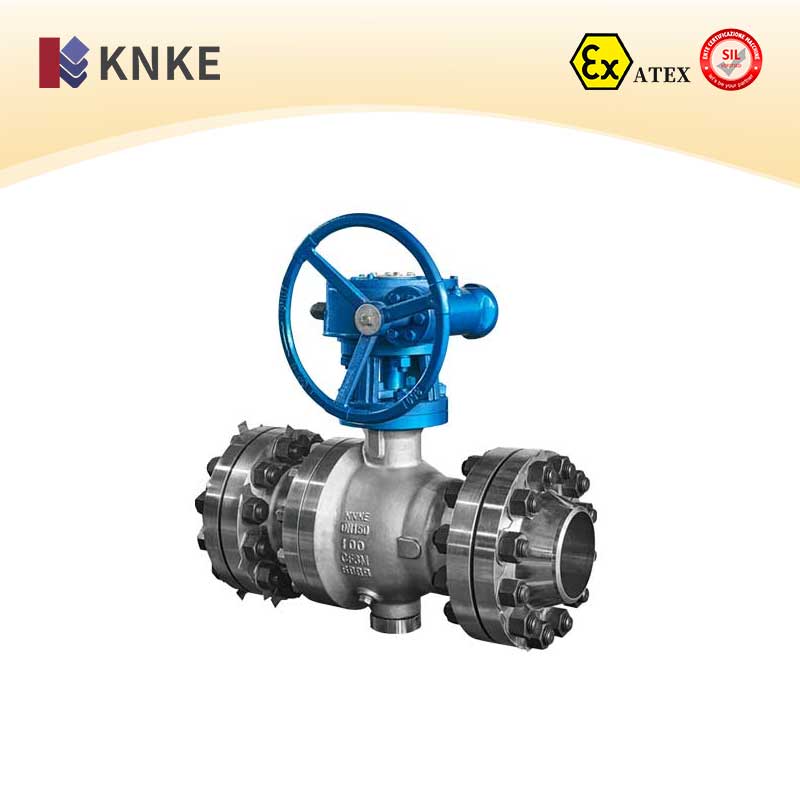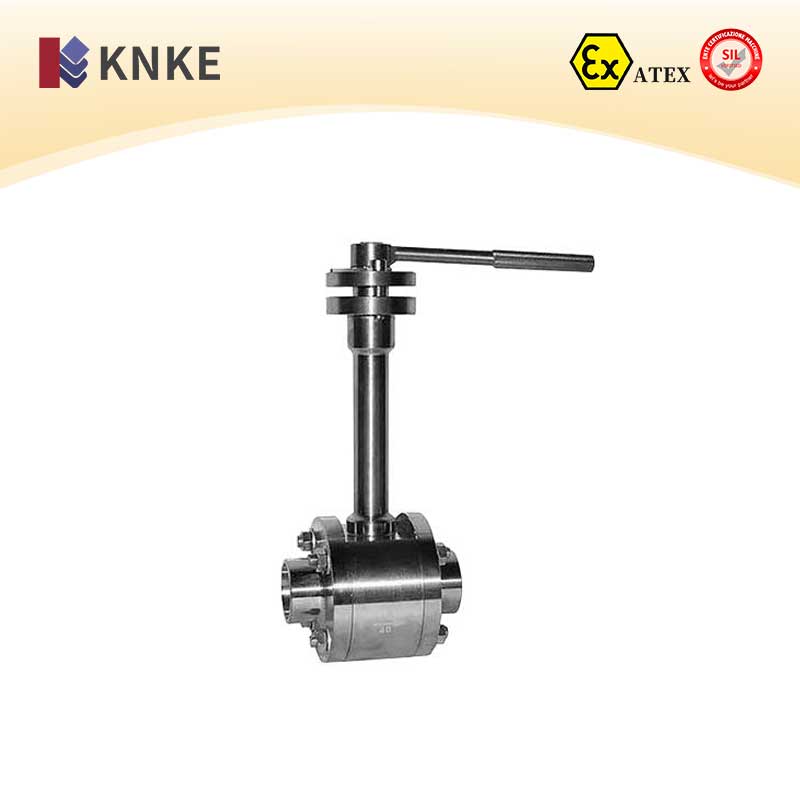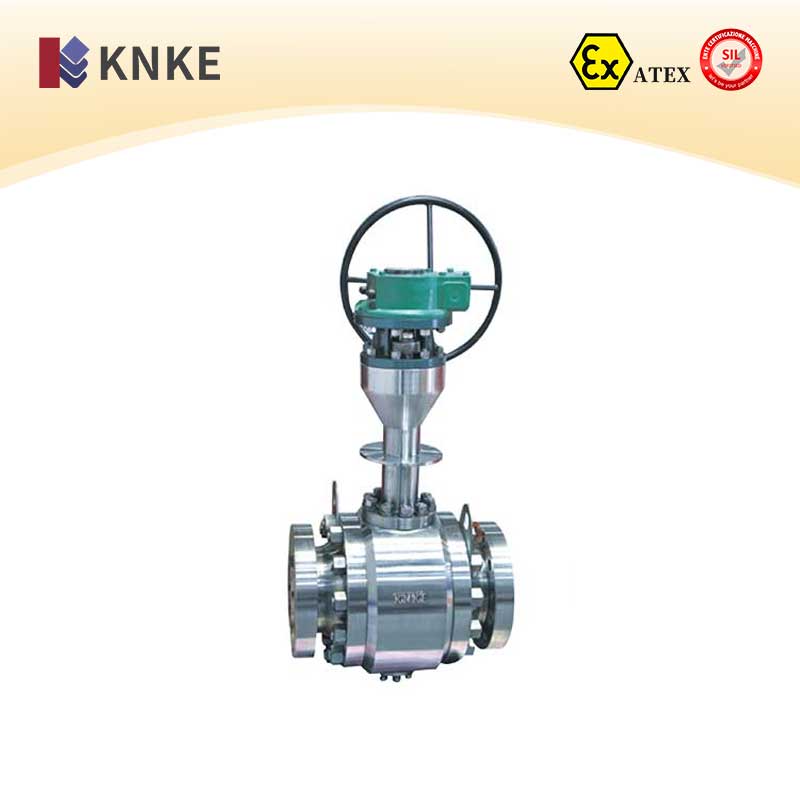Description
Overview of KNKE Cryogenic Ball Valve
KNKE cryogenic ball valve are high-performance industrial valves designed for cryogenic and low-temperature environments. They are used in ethylene production, liquefied natural gas (LPG, LNG) storage and transportation, air separation units, petrochemical tail gas separation, and low-temperature gas tanks. Applications also include tankers and pressure swing adsorption oxygen production systems. Their primary function is to provide precise control for cryogenic fluid media. These valves can handle various temperatures and media, with a minimum operating temperature of -196℃. They offer multiple drive options, including manual, worm gear, pneumatic, or electric actuation. Connection types include flanged, welded, or threaded options.
KNKE Cryogenic Ball Valve Selection Parameters
| Parameter | Specification |
| Nominal Diameter | DN15 to DN300 |
| Structure Type | Ball type |
| Nominal Pressure | 1.6Mpa to 16.0Mpa |
| Connection Type | Flanged, threaded, welded |
| Applicable Temperature | -46℃ to -101℃ to -196℃ |
| Drive Options | Manual, electric, pneumatic |
| Body Material | LCB, low-temperature steel, forged steel, stainless steel |
| Manufacturing Standards | GB, DIN, API, ANSI |
| Applicable Media | Ethylene, liquid oxygen, liquid hydrogen, liquid nitrogen, liquid ammonia, liquid propane, liquefied natural gas |
Product Description of KNKE Cryogenic Ball Valve
KNKE forged cryogenic ball valve feature exceptional sealing and operational flexibility. They are an integral part of low-temperature liquid storage and transportation systems. These valves are suitable for other cryogenic and deep-cooling process media. The design and manufacturing address cryogenic environment challenges, ensuring stability and reliability under extreme conditions.
Structural Design and Manufacturing Features
- Valve Classification: These include floating and fixed cryogenic ball valve, selected based on operational needs.
- Extended Neck Design: For temperatures below -50℃, an extended neck structure is used, with length adjusted for environmental and insulation needs.
- Core Applications: They manage liquid ethylene, liquid oxygen, liquid hydrogen, liquid nitrogen, liquid ammonia, liquid propane, and liquefied natural gas. This is crucial for flammable or explosive media.
Key Features of KNKE Cryogenic Ball Valve
- Temperature Resistance: Pressure-bearing components withstand thermal expansion and contraction while maintaining sealing integrity.
- Cryogenic Treatment: Components undergo cryogenic treatment before precision machining to ensure reliability at -196℃.
- Optimized Packing Chamber: The extended neck keeps the packing chamber away from the cold zone, increasing sealing material lifespan. Lubricant injection forms an oil seal layer to boost sealing.
- Pressure Relief: The valves incorporate pressure-relief structures to handle media gasification safely.
- Reliable Sealing: High-performance gaskets ensure excellent sealing under normal, low, and fluctuating temperature conditions.
Material Selection for KNKE Cryogenic Ball Valve
Material selection is vital for LNG applications to ensure mechanical properties, strength, and rigidity in low-temperature environments. Key materials include:
- Body and Bonnet: LCB (-46℃), LC3 (-101℃), CF8 (304) (-196℃).
- Cryogenic Treatment: Semi-finished components are treated in cryogenic mediums for 2-6 hours. This releases stress and ensures performance, avoiding deformation or leakage.
Technical Specifications of KNKE Cryogenic Ball Valve
| Technical Specification | Standard |
| Design Basis | GB |
| Design Standard | GB12237-89 |
| Structural Length | GB12221-89 |
| Flange Connection | GB/T 9113-2000 JB/T79-94 |
| Testing and Inspection | JB/T 9092-99 |
Testing Procedures
- Strength tests at ambient temperature.
- Low-pressure sealing and upper sealing tests at ambient temperature.
- Low-temperature upper sealing gas-tight tests.
- Low-temperature gas-tight tests.
- Cryogenic impact tests on components (batch sampling).
- Electrostatic performance tests: resistance between valve body and stem < 1 ohm.
KNKE cryogenic ball valve comply with stringent design and manufacturing standards. Extensive testing ensures safety and functionality under cryogenic conditions.

